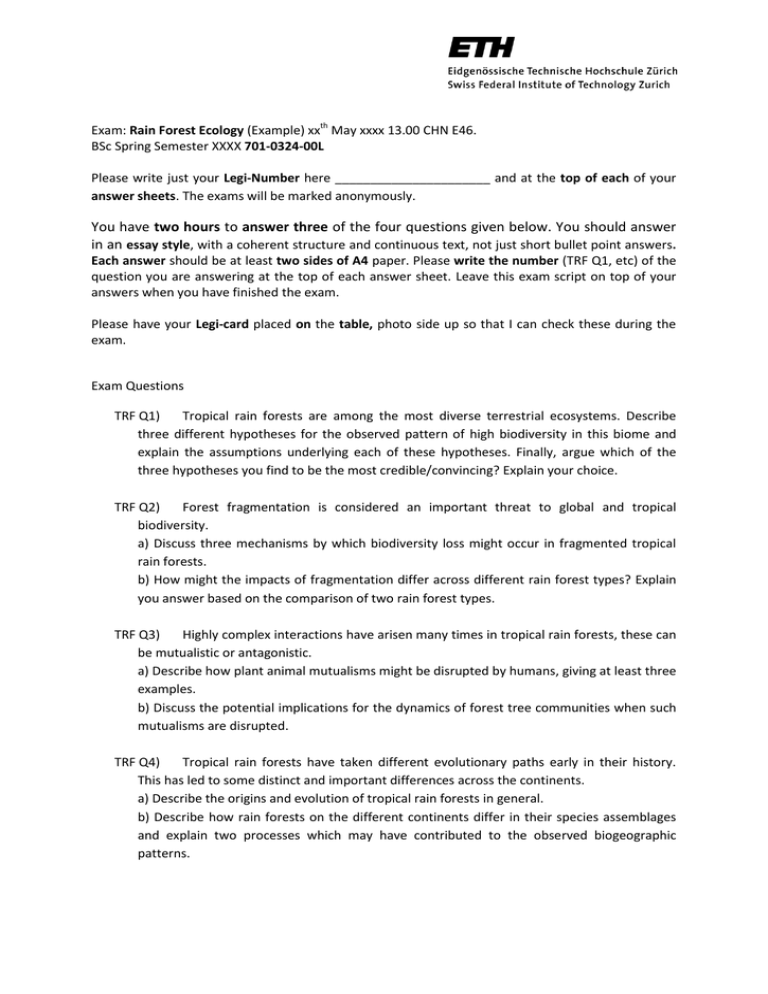You have two hours to answer three of the four questions given
advertisement

Exam: Rain Forest Ecology (Example) xxth May xxxx 13.00 CHN E46. BSc Spring Semester XXXX 701-0324-00L Please write just your Legi-Number here ______________________ and at the top of each of your answer sheets. The exams will be marked anonymously. You have two hours to answer three of the four questions given below. You should answer in an essay style, with a coherent structure and continuous text, not just short bullet point answers. Each answer should be at least two sides of A4 paper. Please write the number (TRF Q1, etc) of the question you are answering at the top of each answer sheet. Leave this exam script on top of your answers when you have finished the exam. Please have your Legi-card placed on the table, photo side up so that I can check these during the exam. Exam Questions TRF Q1) Tropical rain forests are among the most diverse terrestrial ecosystems. Describe three different hypotheses for the observed pattern of high biodiversity in this biome and explain the assumptions underlying each of these hypotheses. Finally, argue which of the three hypotheses you find to be the most credible/convincing? Explain your choice. TRF Q2) Forest fragmentation is considered an important threat to global and tropical biodiversity. a) Discuss three mechanisms by which biodiversity loss might occur in fragmented tropical rain forests. b) How might the impacts of fragmentation differ across different rain forest types? Explain you answer based on the comparison of two rain forest types. TRF Q3) Highly complex interactions have arisen many times in tropical rain forests, these can be mutualistic or antagonistic. a) Describe how plant animal mutualisms might be disrupted by humans, giving at least three examples. b) Discuss the potential implications for the dynamics of forest tree communities when such mutualisms are disrupted. TRF Q4) Tropical rain forests have taken different evolutionary paths early in their history. This has led to some distinct and important differences across the continents. a) Describe the origins and evolution of tropical rain forests in general. b) Describe how rain forests on the different continents differ in their species assemblages and explain two processes which may have contributed to the observed biogeographic patterns.






